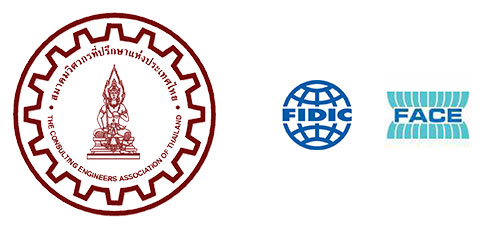Project Name: Feasibility Study of the Rayong – Chanthaburi – Trat Railway
Name of Company: Thai Professional Engineering Consultants Co., Ltd.(TPEC)
Name of Associated Firms: Wilbur Smith Associates Inc. and Scott Wilson Kirkpatric (Thailand) Ltd.
Location: The new line is to provide a rail service to the eastern part of Rayong Province but primarily to the Provinces of Chanthaburi and Trat, Thailand.
Client: The State Railway of Thailand, Ministry of Transportation and Communications.
Project cost: 20,600 Million Baht.
Duration: 30/10/2540-30/06/2541
Type of services: The main objectives of this project were to:
- Identify the optimal line location for a route in the Rayong – Chanthaburi – Trat corridor
- Establish appropriate design standards
- Prepare preliminary plans and profiles of the proposed line
- Estimate passenger and freight traffic demand for the proposed Line
- Determine operational requirements and capabilities of the Proposed line as well as the connecting SRT routes that would be affected by increased traffic flows
- Develop preliminary requirements for signaling and communications, rolling stock, station, depots and other support facilities
- Examine economic and financial aspects of the proposed line including revenue and operating expense, capital costs and return on investment, and perform appropriate sensitivity analyzes
- Identify non-financial benefits that the new line would create
- Perform an Initial Environmental Examination (IEE) of the line and identify any significant impacts
- Recommend a construction schedule and financing plan based on the line being built in two phases: Rayong to Chanthaburi And Chanthaburi to Trat
Project description :
The Eastern Seaboard is one of the fastest developing areas in Thailand and aided by a high level of Government support and Infrastructure provision. Within the Eastern Seaboard growth has been particularly rapid along the coastal areas of Chonburi and Rayong.
Until the mid 1980’s these coastal areas had no rail services but in 1985 SRT opened a new line from Chachoengsao to Sattahip. A branch line was subsequently built from Si Racha To serve the developing container port at Laem Chabang, and the main line was extended from Sattahip to Map Ta Phut in 1995. A further extension from Map Ta Phut to Rayong has also been planned and designed.
These new rail lines are focused on the movement of freight, and have been successful in attracting increasing volumes of containerized traffic to and from Laem Chabang, and bulk Traffic to and from the port area at Map Ta Phut. Flows on the extension to Rayong are alsoforecast to be substantial.
There is expected to be continuing growth of the Eastern Seaboard as the Government continues to promote this area to encourage decentralization away from Bangkok. There is also the possibility of expansion within the Eastern Seaboard away from the increasing congested coastal belt between Rayong and Chonburi. Given the substantial use of the existing railway and the increase in the potential market with the further economic development of the area, SRT therefore considered the feasibility and viability of an extension of the rail line further east to Chanthaburi and Trat. This would serve these provinces linking them to the existing development areas in Rayong, Chonburi and Chachoengsao, and also to Bangkok. The line could also form part of a future connection to Cambodia, either via Trat or Chanthaburi.
The new line would provide a rail service to the eastern part of Rayong Province but primarily to the Provinces of Chanthaburi and Trat. The population of the latter two provinces is about 700,000 and both have gross provincial product and income rates well below the national average. While Rayong has had rapid economic growth associated with Eastern Seaboard development and neither Chanthaburi nor Trat has benefited to any large extent. Both provinces are still primarily agricultural with, as yet, little industrial development.
The terrain of the corridor between Rayong and Trat comprises gently undulating topography broken by five groups of high hills or mountains. Four of these mountainous areas affected the choice of alignment. The coast line adjacent to the route is low lying with large areas of swamp, wide river mouth, flood plains.
The work was subdivided along functional lines into five major categories; namely, Train operations, Civil engineering, Signaling and communications, Environmental and socio- economic considerations, Economic and financial issues.


